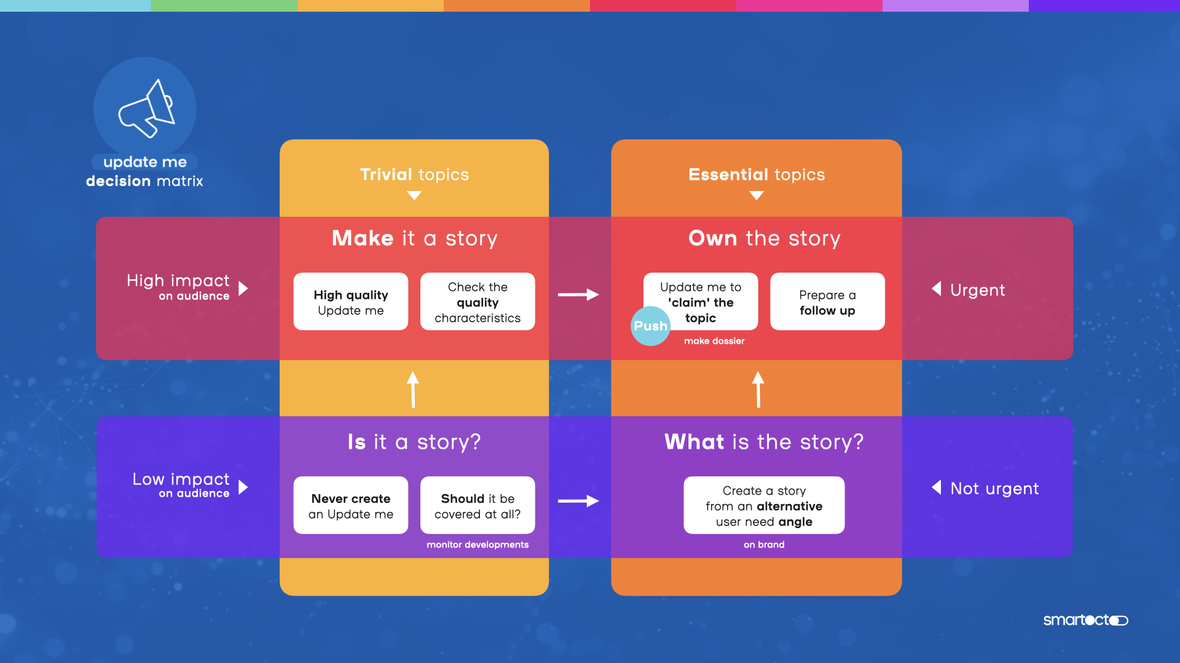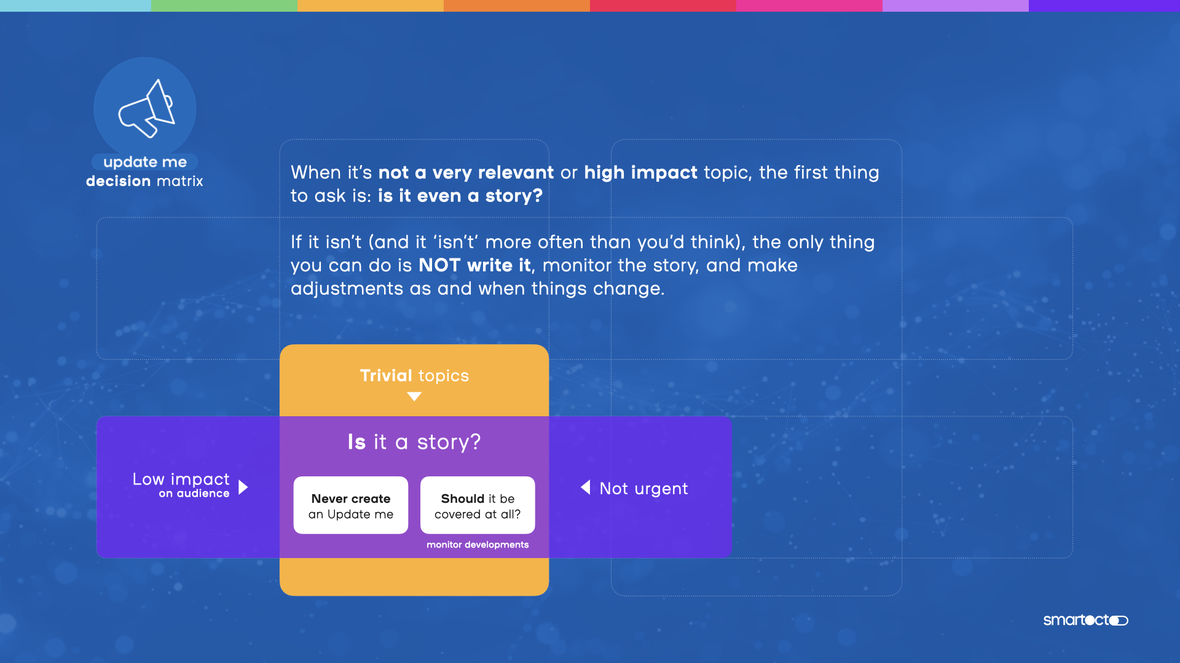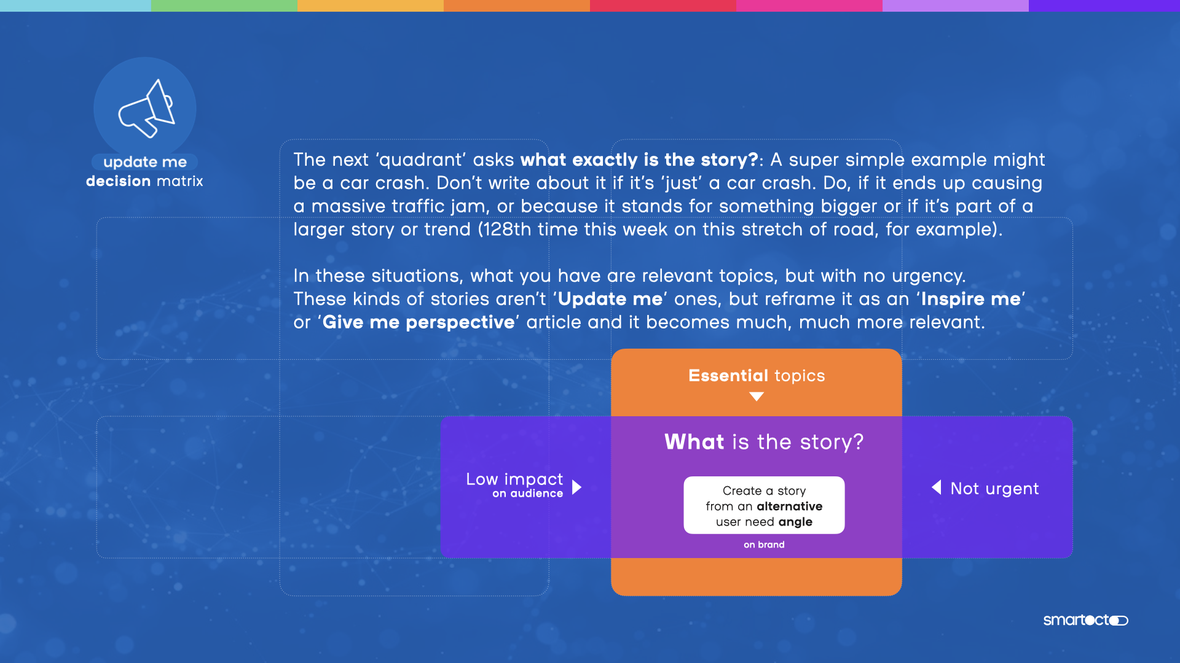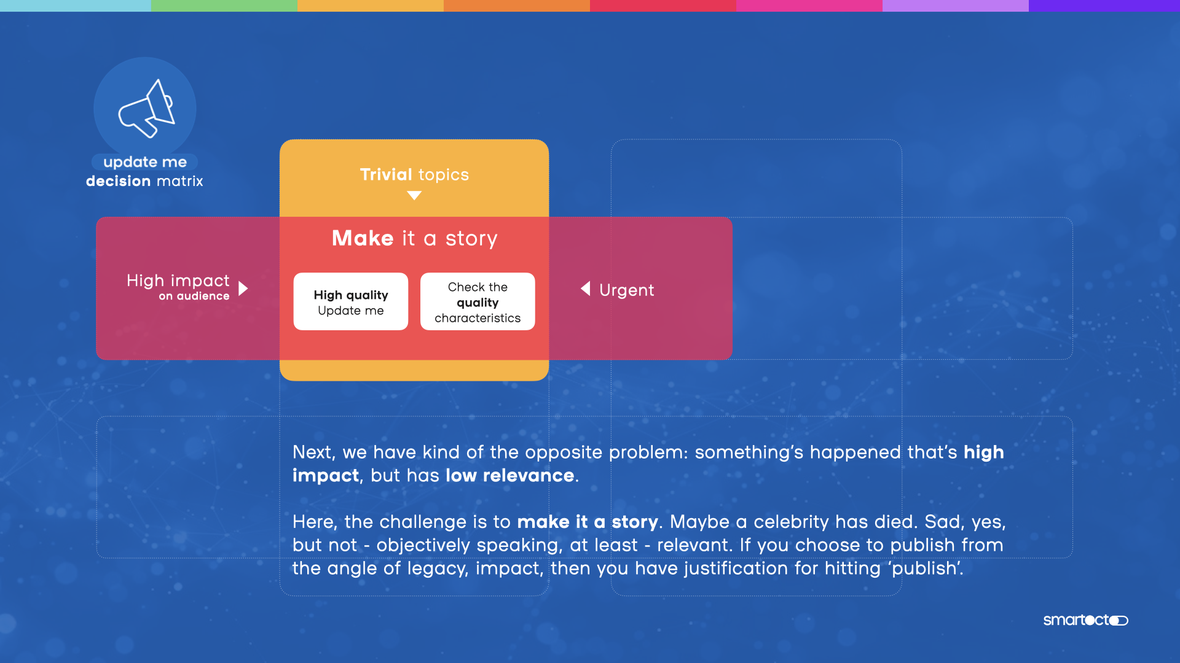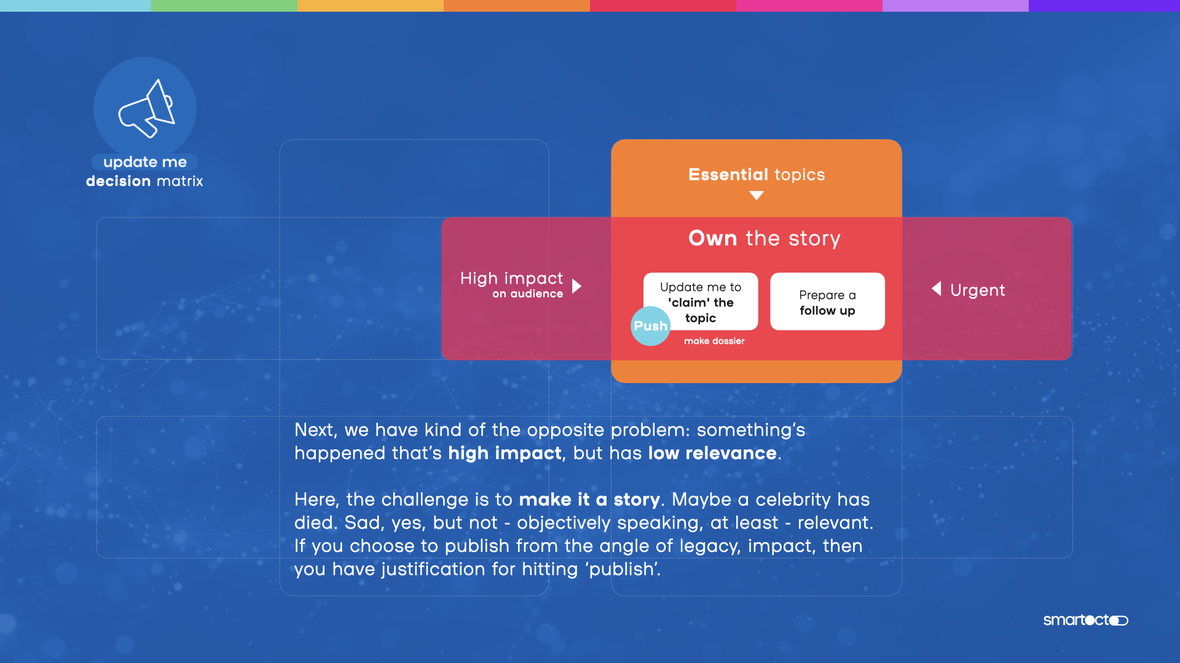How do you integrate user needs into your workflow - and is it worth the effort? Last year we worked on a growth hack with Dutch broadcaster, Omroep West, part of the RPO. They wanted to see if they could boost audience engagement through a user needs-centred approach - and we can now share the results of that project with you.
Using user needs to optimise content strategy
June 13, 2025 by Em Kuntze
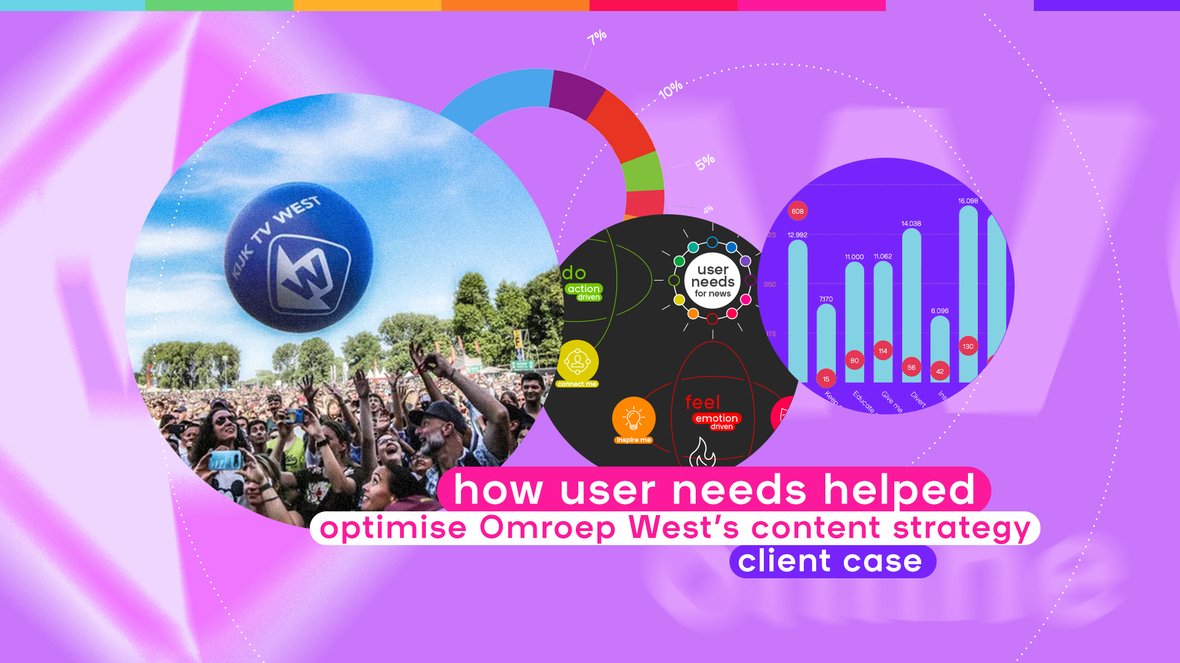
“Help us improve our content strategy with the integration of the user needs model”
We knew that our news coverage wasn’t in line with what our audience wanted. With the implementation of the user needs model together with smartocto we wanted to teach the newsroom an alternative way of creating news articles - while also learning which user needs stories resonate best for various topics and sections.

Henk Ruijl editor in chief, Omroep West
Who is Omroep West?
* One of 13 publicly funded regional broadcasters in the Netherlands
* They make daily TV, radio and have online appearance on web, app and multiple social media platforms like YouTube, Instagram, TikTok, Facebook and X
* 11.7m visits to their website/app per month
* More than 50% of their traffic comes from web (making app less dominant)
* 42% growth over 2024 for web/app engagement
Pre-implementation analysis
Before Omroep West decided to work with the user needs model in a more structured and more intensive way, their impact and output looked like this:
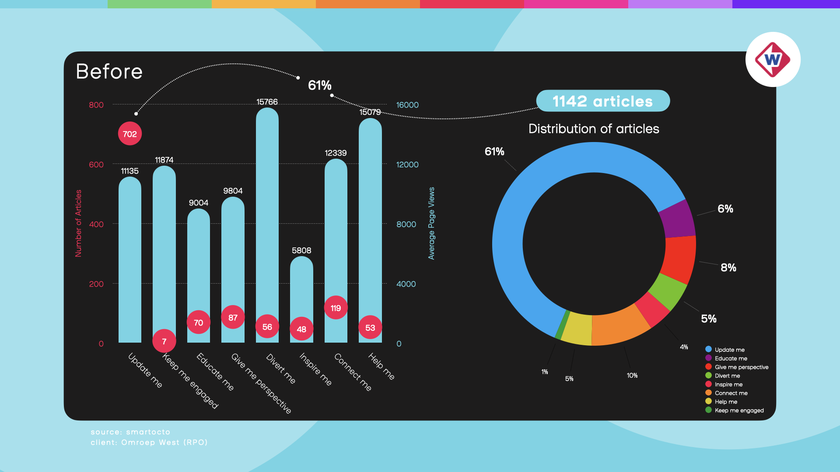
Any floating red dots in these visualisations are a clear signal of imbalance, and here the serious overproduction of fact-driven articles (Update me) is a pretty clear indication that the audience wanted something else from the newsroom beyond the plain news facts.
The higher than average pageviews on Help me and Divert me pieces (as shown by the blue bars) is something to keep an eye on. This could show that articles have simply done a stunning job of outperforming and are just exemplary - or it could signal that the audience just finds those approaches really attractive and would happily gobble up others created in the same way.
What we did
- We delivered an [in-person] training to the newsroom to bring everyone up to speed with the basics of the user needs model. This gave all participants the chance to understand the framework, get clarity on the various user needs, feel confident about how it could be used, and ask any questions.
- The most powerful change the newsroom made was to ask journalists to come up with story suggestions during the morning meeting based on this framework, paying particular attention to alternative approaches to the news coverage that go beyond the plain facts
- Update me stories are always tricky to deal with. Of course they’re often still necessary. What we suggested - and what Omroep West did - was to ensure that they always thought about potential follow ups to those initial stories - but from a different angle
- We recommended that they try to lower the amount of Update me stories for topics that might be better presented from alternative angles (we’ll get into that below).
The two focus areas we identified
From here we identified two areas for development (two ‘modules’, if you like) - both centred around the preexisting overproduction of Update me articles.
O N E : How to overcome overproduction of Update me articles
The first was creating a simple matrix. This reference enables editors and journalists to see at a glance what actions might be best taken when a new story appears.
It should also help you understand if the article you’re thinking about publishing should be published as an Update me article at all:
Five slides to explain the Update me decision matrix
What we see over and over in the data that we collect from clients is what we call the 70-10 rule meaning that 70% of content only brings in 10% of impact (reach). The most dominant user need in this 70% of content is Update me stories. This signals what the BBC in 2016 already discovered: There is a huge misalignment between what the audience wants in digital and what it gets from media outlets and publishers.

Rutger Verhoeven CMO, smartocto
It really pays off to re-think this overproduction of User Needs because there’s actually four things you can gain by doing this:
1. A happier audience:
Your audience will like your efforts more, returning it with loyalty, higher engagement, returning visits, deeper scroll depth, higher page depth, subscription … all the good stuff
2. More time for stories that matter:
Making less Update me stories means that there’s more time to create alternative stories, stories that resonate better, but also add value to your brand
3. Strategic insights:
Your newsroom will better understand what resonates best, it will eventually see patterns in the data and learn that for example Inspire me stories work best for engagement in the sport section or give me perspective pieces bring in the most new visitors for economic news
4. Outsmart competition:
Using various user needs to cover a news event will always lead to a more unique story (after all commodity news is everywhere) and therefore something that your audience can’t find anywhere else. This gives you a distinctive position compared to your competitors and provides recognition for your audience. They will learn to understand how you cover news differently and more relevant.
The matrix helps to determine when to decide to write an Update me article - and when not to. When the topic of a certain news event is highly trivial and the impact for the reader base is expected to be low it’s wise to decide not to cover the topic at all.
T W O : How to make sure the follow up is part of the primary commissioning process
Like many newsrooms, Update me articles are felt to be an essential part of the brand promise. The key for Omroep West was to ensure that the power lay in the follow up to that original update. This workflow has proved useful to them - and may be for you as well.
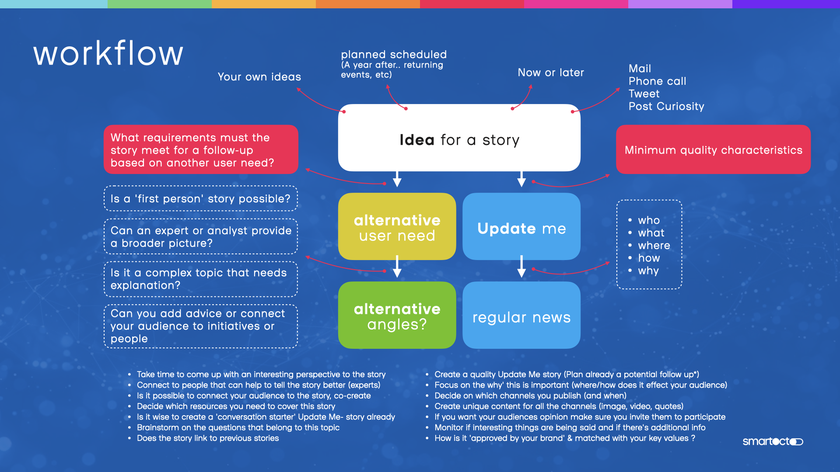
By introducing the new model we not only started to create a much more balanced output of news coverage but we also saw that the result went up. We got more pageviews but also more returning visitors, better engagement, higher attention time and even bigger page depth - indicating that our audience actually appreciated the content more and were therefore consuming it more. And last but not least, it somehow also brought the pleasure back into the newsroom because with the model as a guideline more creativity and alternative, more unique stories are being created.

Henk Lemckert CEO, omroep west
The result
“The User Needs approach to covering the news has invigorated the newsroom enormously and it is really satisfying. Our engagement metrics show that the audience appreciates it too!” - Henk Lemckert
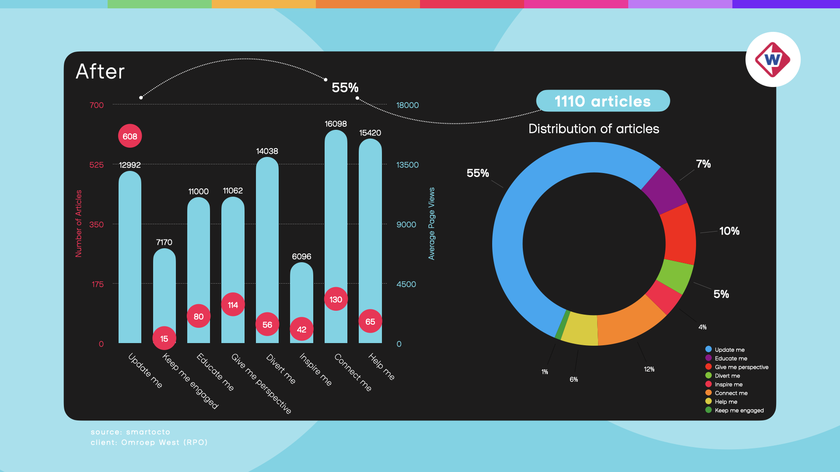
Rutger's thoughts on these findings
"The first thing that immediately stands out is how well actionable content works for Omroep West (Help me & Connect me articles). In fact, this is a trend we see in regional and local publishers - presumably because those brands rely on the fact that there is a local focus to their value proposition and what makes them unique. It’s no coincidence that titles which have a focus on service journalism are often firmly rooted in their communities and locales.
Secondly we see that Omroep West lowered the amount of Update me articles, which has resulted in a much higher average pageviews on the remaining fact-driven pieces they produced during this growth hack period. This is a clear indication that working on the balance - and lowering the output on Update me stories - is a strategy that pays off.
Thirdly, the overall balance of output is a lot better - sure it can still be improved - but it’s the start of a process and lowering directly your primary way of news coverage by 6% is a really big improvement.
Finally, I have to mention the cultural shift in the newsroom. Using user needs creates a different approach to covering the news, and especially how the team discusses and plans it during the morning meetings. This is something that the graphs don’t show, but it’s good to hear the positive impact this has had on morale and job satisfaction at Omroep West."
While the ratio of articles to reads in the Update me category are still imbalanced, there’s been a decline in their production. Now, they make up only 55% of Omroep West’s output - and critically the balance of articles produced from other angles is much healthier.
“Yes, the number of Update Me stories are still higher than article reads, but they now make up only 55% of Omroep West’s output and, critically, there’s a much better balance of stories created from other angles. What isn’t as evident from this infographic is the cultural shift that the newsroom underwent. Henk Lemckert describes his newsrooms as being “invigorated”, which is really satisfying - and their engagement metrics show that the audience appreciates it too!”

rutger verhoeven cmo, smartocto
And, while we're talking engagement, there are two things worth highlighting here:
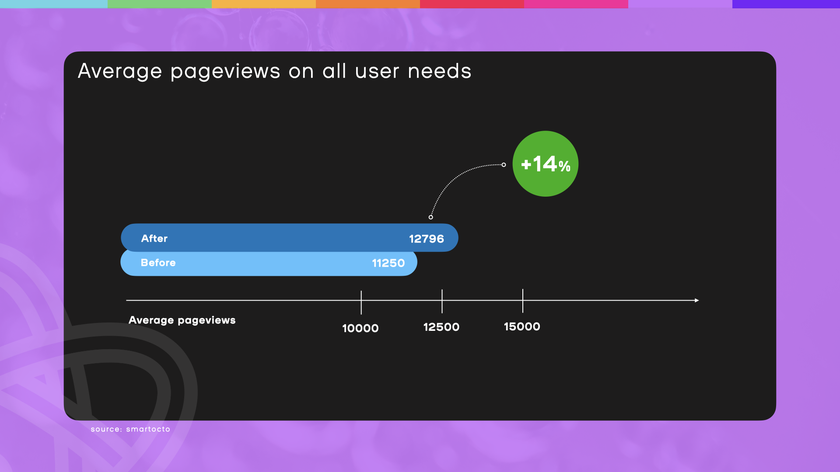
Firstly, essential metrics (like average pageviews) on all articles increased by 14%. This was due to a better balance of their output (the 6% articles that Omroep West produced in the fact-driven domain were replaced by emotional and actionable content)
Secondly, the average attention time on all the published articles increased by 2 seconds. That’s an increase of 4% which is significant - and a clear indication that the loyalty of the readers grew due to the new content strategy
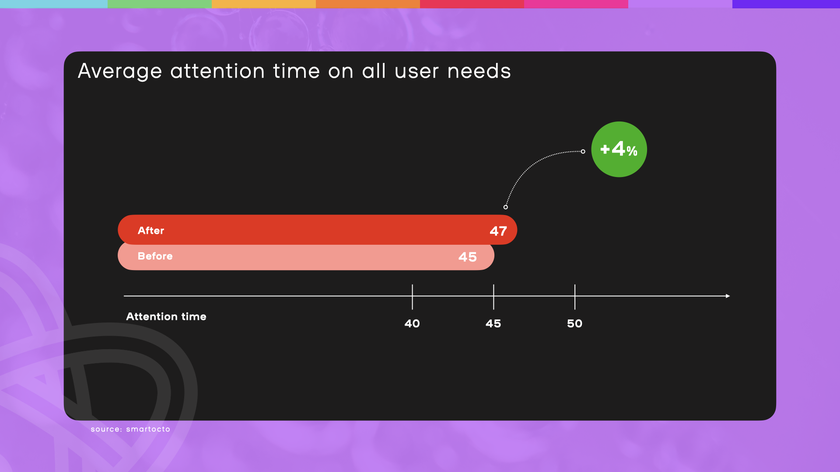
"We saw that our traditional way of reporting news had reached its limits. The promise of the user needs model hit the core of what we were missing: relevance, impact and connection with our audience. That's why we consciously chose to take the plunge — with a group of curious frontrunners who dare to experiment and discover together how we can make our journalism future-proof."

henk ruijl editor in chief, omroep west
What have Omroep West been doing since then?
The work they did during this project has been integrated into their day to day workflow, and has resulted in the newsroom adopting the lessons of this ‘growth hack’:
* Focus on locality and create more ‘action-driven’ content (i.e. connect me)
* Create more inspirational content
* Lower amount of update articles and improve the update me articles that need to be created
HENK'S RESPONSE TO THIS REPORT:
“Wow, what a strong summary of content! Thank you for that Rutger – and we’re really honoured that you’ve used us as an example.
The model, the measuring - and the feedback on it all - brings us a lot. So, while the numbers (your graphs) don’t show the ‘perfect score’, I look at it as an indication that we’re on the right track. This all helps make clear frameworks for everyone. We as management provide the crash barriers; our colleagues must determine the pace within that.
The thing I’d really like to emphasise is that it’s all about keeping the model 'between the ears' on a daily basis.That is crucial and essential for success. Now, in every morning meeting we call out the agreed user need per topic and challenge it together. We force everyone within the newsroom to have the dashboards of smartocto on the wall - it’s an essential condition to make data-inspired working successful.
With larger topics, such as the upcoming NATO summit, thinking about all user need angles works really well. It enlivens creative sessions and makes our profession more interesting. Smaller, less impactful topics are much more challenging. We share daily overviews of applied User Needs to all in the newsroom, that also helps to keep it alive and part of the journalistic process.”
Feeling inspired?
There are five things you can do right now to learn how User Needs will work for you …
1. Download the whitepaper, playbook and/ or growth hacks*
2. Join our User Needs Labs (with FT Strategies)
3. Get started on your own user needs journey with a baseline report
4. Use our tech and AI (get started with a demo)
5. Sign up for ‘Storied’, Rutger’s quarterly user needs newsletter
*coming soon!
You may also like...
How user needs work at Der Spiegel
There’s an adage that you can’t manage what you don’t measure. We know this to be true, and what follows is a case study showing why reports - and baseline reports in particular - are an invaluable part of your newsroom’s toolkit. Here’s what Der Spiegel learned when they created one.

The strategic power of baseline reports
If data informs your editorial decisions, the central question should always be: what works and what doesn’t? But there’s an even more fundamental one to answer first. What does success actually mean? Enter the baseline report.

